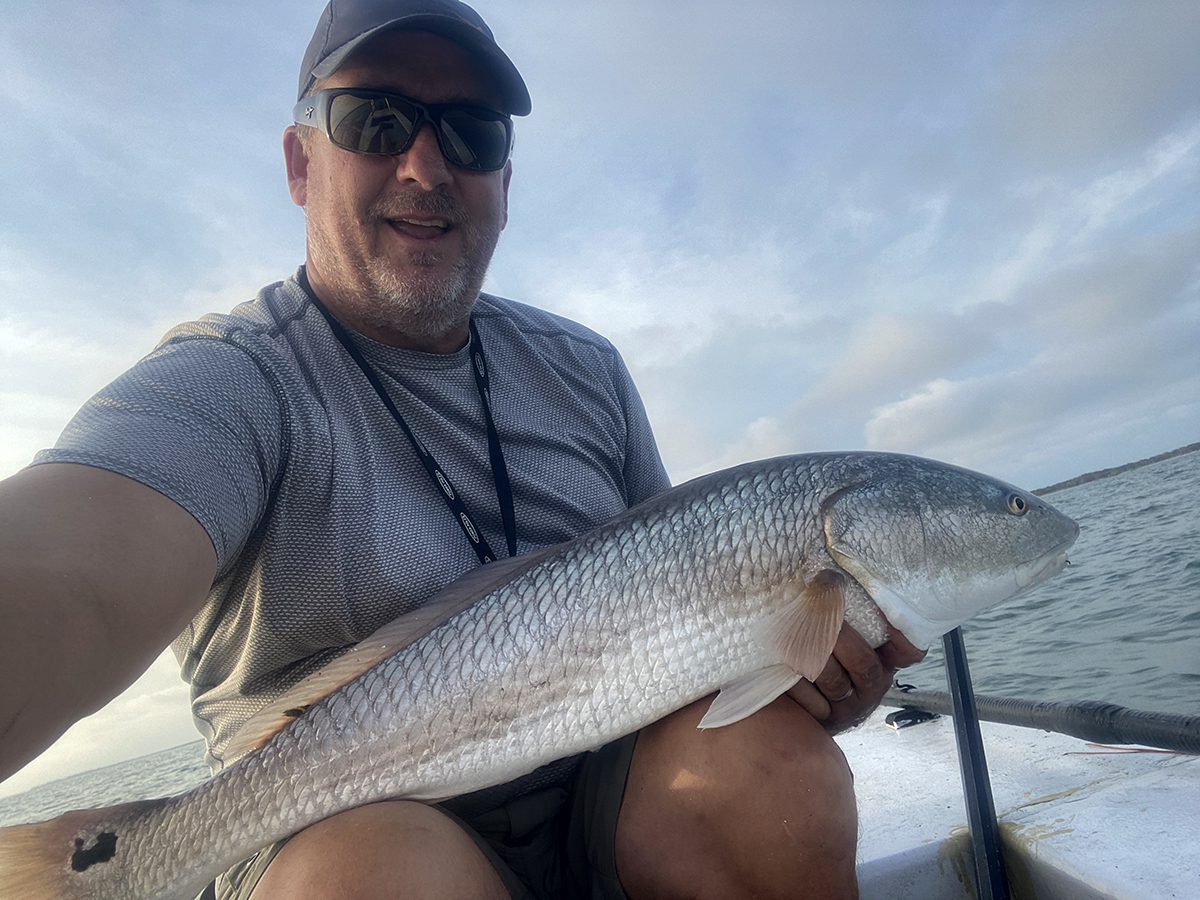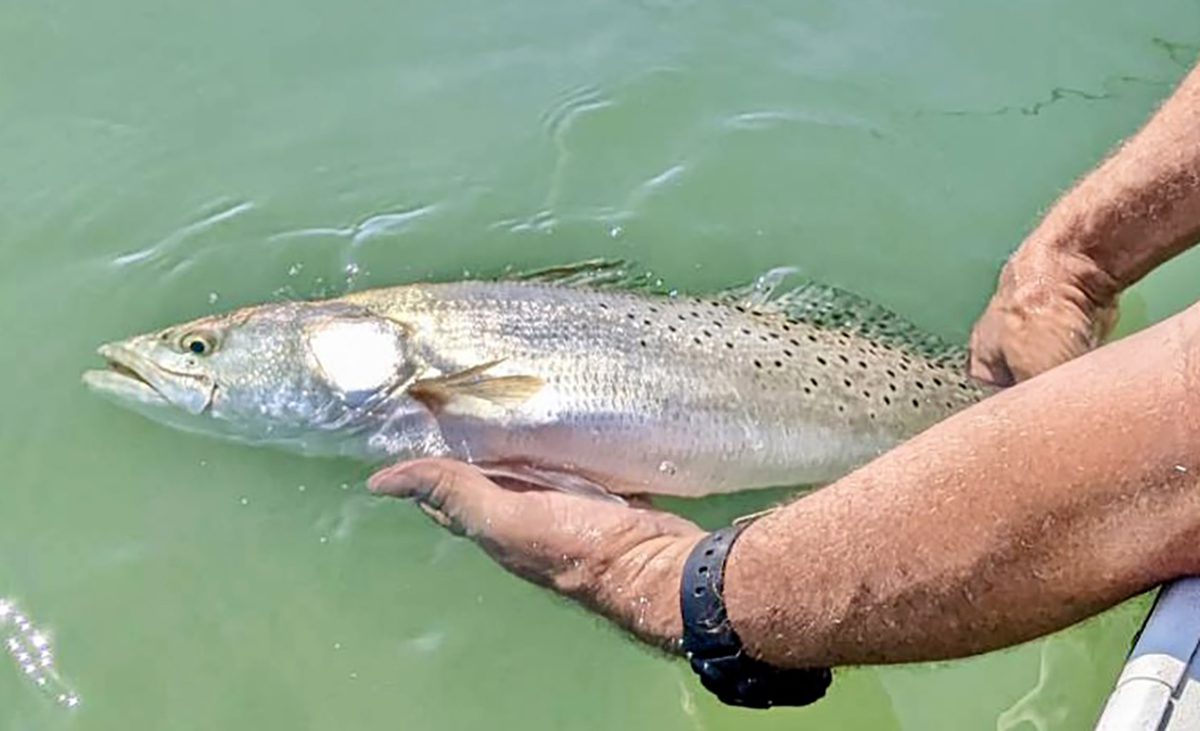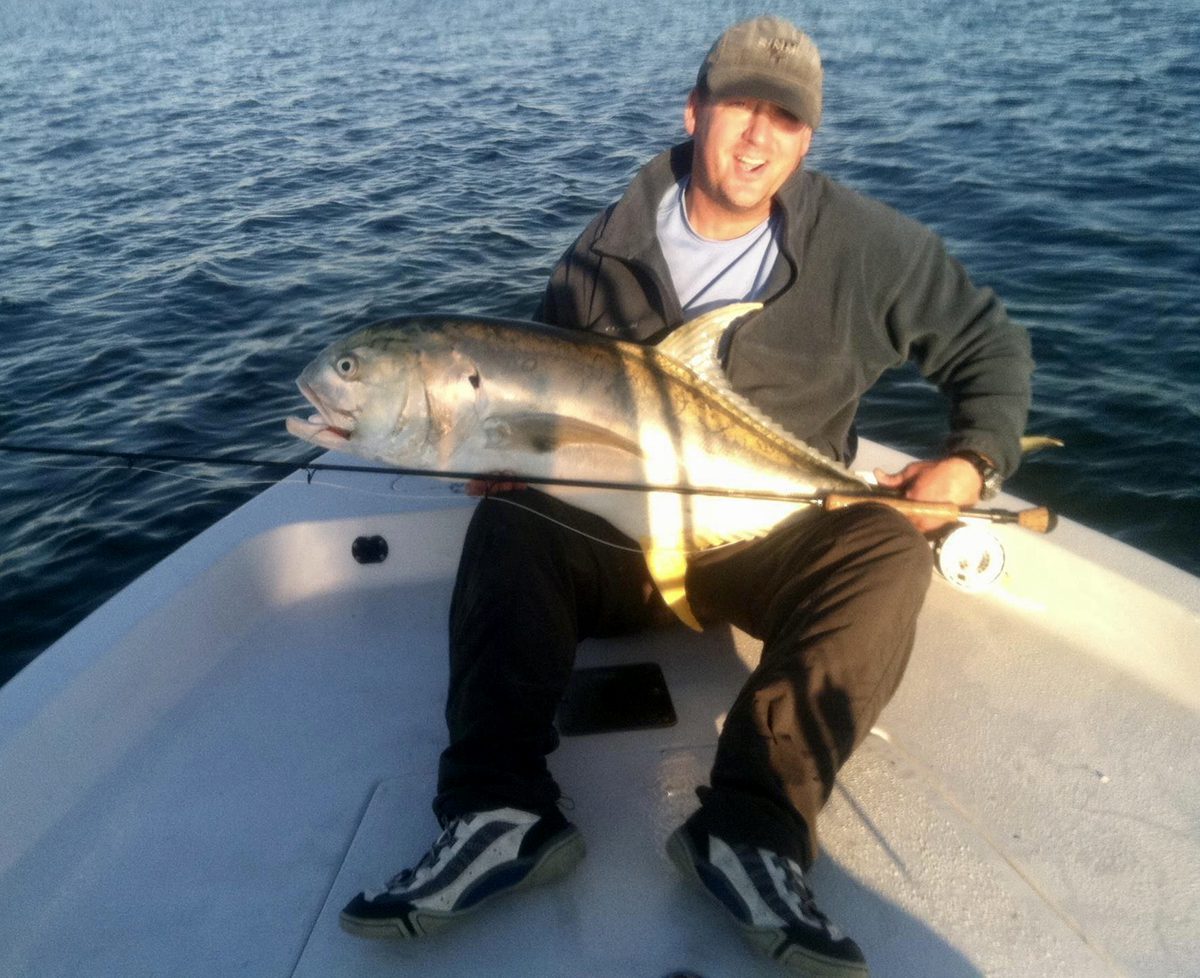
A 20-pound red drum swims silently through dark water. Up ahead she sees a flash. She speeds her pace and quickly catches up. There is a small creature struggling to make headway against the current.
With a sweep of her tail and a flare of her gills, she opens her mouth and it disappears. She quickly realizes something is wrong and tries to expel the object, it gets out of her mouth but is still stuck to the outside of her face. She shakes her head violently in an attempt to dislodge it but to no avail.
Supporter Spotlight
Something is pulling her towards a dark object floating on the surface. She takes off swimming in the opposite direction. After a minute she gets a little tired and finds herself pulled back again. The large floating object is right above her now. She makes one last mighty struggle to get away from the force that is pulling her. Free. The object pulls away from her face and she takes off. She has no idea what just happened but she is going to get out of there as fast as she possibly can.
The angler in the boat is heartbroken. He was not expecting to see a fish that big. The biggest redfish he had caught in the past was around 6 pounds. He was using a 6½-foot, medium-action spinning rod with 15-pound test braided line and casting a gold weedless spoon. In the past there was a little bit of a struggle next to the boat but he was not prepared to deal with a fish that big.
Let’s talk about what he did and what, more importantly, he can do differently next time. Newtonian physics may come into play.
First thing first, let’s make sure all of our equipment is in good condition. Make sure your rod doesn’t have any nicks in the graphite. This can happen near the tip when it hits a hard surface or something else hits the rod itself. Eventually the rod will break clean right at that point.
The guides need to be smooth and clear. Many times, I have had to replace rod guides. There are inserts that make them smoother and protect the metal from grooves that can be caused by the line. Impacts will cause them to crack and pop out. This will create a surface that is quite abrasive and will break your line when it’s placed under a strain.
Supporter Spotlight
Check your line. It should not be frayed or have extraneous knots. These will break at the worst times. The knots you tie on purpose should be well tied. Practice tying knots until you can tie them without looking.
Finally make sure your reel is operating properly. The handle should turn smoothly. The drag should run out without chattering or catching. Everything should be clean.
Any of these things being out of shape will be a problem when a big fish comes along.
Your hooks should be sharp enough to catch when dragged across your thumbnail. Dull hooks will result in missed strikes. I regularly change out the hooks on plugs and other lures when they show discoloration. I have a pair of well-used split-ring pliers that aid in this operation. I usually replace hooks from the factory with high quality ones from Gamakatsu or Owner.
In our above scenario, let’s assume that our angler had quality gear, that was well cared for with good line and sharp hooks. What else could have happened? Lots of things.
When you first set the hook into a nice-sized fish, you feel a nice pull and maybe a little headshake. When a big one gets on, the headshakes become heavy. Smaller fish will shake and it feels like a wiggle up the line. When a big fish shakes, it becomes widely spaced thumps. An experienced angler will feel this right away and know that things are different from usual and different strategies need to be used. Inexperienced anglers will just start cranking the reel handle like crazy.
If the drag is clicking, stop reeling. This is the No. 1 mistake. Don’t reel unless you are actually gaining line. If the fish wants to run, let it. Don’t turn the reel handle as it’s going. This introduces twist into the line, which weakens it. It also creates extra force at the hooks point of contact, which will cause it to pull out. This extra force is something to avoid.

After the fish is done with its initial run (the bigger the fish, the longer the run) lift your rod until the handle is pointing toward 11 o’clock. Do not allow any slack and reel in slightly faster than you drop your rod back toward the fish. This allows you to gain line without the drag moving. Keep gaining line using the lift/reel method. Slack is your enemy. Any slack line will allow the hook an opportunity to come out.
As your prize gets closer to the boat it will really get frantic. There are a number of tactics it may use. It may attempt to go under the boat. Counter this by holding your rod well out away from the gunnel. Don’t let the rod or the line contact anything. Rod might break. Line might snap. Another popular method for a big fish to gain its freedom is a last-ditch surge of energy. It doesn’t matter how tired it may seem, there will be energy for a burst. This is the primary time when big fish are lost. The angler will keep pulling or lifting the rod and be reeling the whole time.

This is probably what our angler in this story did. I know this because I’ve seen it too many times. One of the things I do is to slightly loosen my drag when a big fish is boatside. The forces imparted to the line are multiplied when the fish is close.
As professor Sir Isaac Newton said, “The actions of two bodies upon each other are always equal and always opposite in direction.” Just be prepared ahead of time. Never pull on your rod when the fish is running away. Drop your rod tip to the fish as it pulls away while keeping the line tight. Lifting up at this time will result in an unhappy outcome.
Finally, be ready with a good landing net. Make sure it’s big enough and has a long-enough handle. Have a friend who knows how to use it or be ready to do it yourself. A 30-inch redfish or 27-inch speckled trout is not easy to grab.
Here’s hoping you hook into the fish of your dreams this year. The next bite could be “The One.” When it comes, I hope you’re ready.









